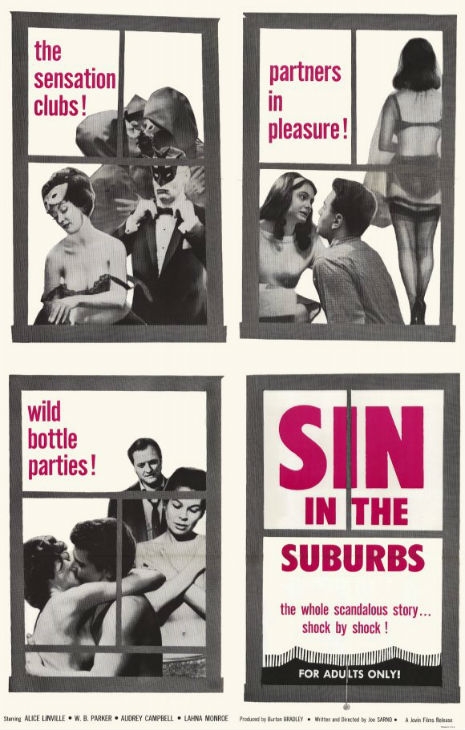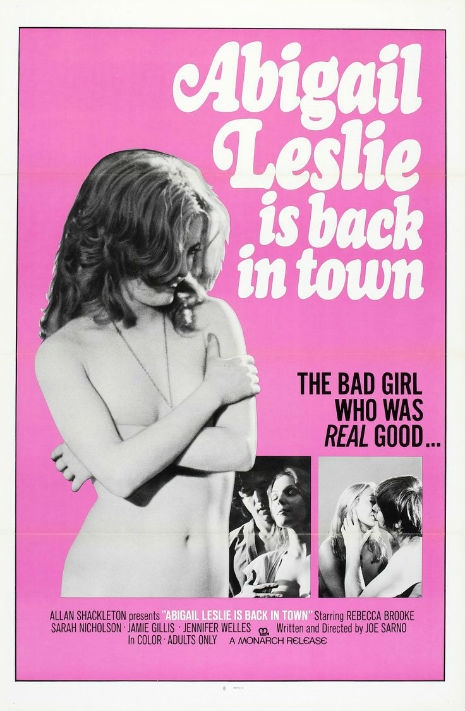
There is nothing more inspirational, beautiful and harrowing than an artist who takes true risks. Being an artist, especially an independent filmmaker, is hard enough. It’s not like things like job security, steady paychecks and any sort of proper retirement are going to be a constant. Couple that with being a filmmaker who works within a genre that is often critically maligned and life is suddenly a much more harsh trek to cut through. But none of that ever stopped Joseph Sarno, whose cinematic trail began in the 1960’s, with such arty and dramatic forays like Sin in the Suburbs and Inga, then segueing firmly into being one of the most notable cult directors of the 1970’s and 80’s. His legacy was first covered in print thanks to RE/Search’s seminal Incredibly Strange Films book. However, it was only a matter of time for an enterprising filmmaker to come along and do a documentary on the man and his work.
It took Swedish director Wiktor Ericsson and his film, A Life in Dirty Movies to make this needed venture a vital reality and bless him for it.

Ericsson and company had the chance to delve into Sarno’s rich cinematic past, talk with a few of his key artists and associates, as well as portray a slice of life into Joe’s golden years with his former actress, wife/partner, the lithe juggernaut of a woman, Peggy Steffans-Sarno. But A Life in Dirty Movies is about more than just a man who who forged his own path in the worlds of sexploitation and hardcore cinema and even, to some degree, more about one incredible love story of loyalty. It’s about the heart and soul of an artist in his later years who has given so much of himself to something he truly believed in. There are few things more compelling than a creative person with a “damn the torpedoes” approach, especially when it is coming from someone as emotionally forward thinking and sensitive as Joe Sarno.
A Life in Dirty Movies is an interesting title for this film, since early on, it becomes readily apparent that Sarno’s approach to film was anything but dirty. In fact, a couple of commentators joke about how any raincoat crowd going to see one of Sarno’s moodier character studies would have been crippled when it came to having a private hand-party in the theater. (This all invokes one of my favorite film descriptors ever, courtesy of Eddie Muller and Daniel Faris’ book Grindhouse. The term in question is “a no hatter.” This was a term to describe a sexploitation film that failed to arouse the male audience, since they would often attend wearing hats for them to take care of business in.) But that’s the thing. Simple prurience can become boring quick unless there are other layers going on, which was something Joe often incorporated.

With that, we get glimpses of his work, ranging from his exquisitely lit, black and white art-type 60’s films, like Sin in the Suburbs and Vibrations to his 1970’s color character-melodramas such as Laura’s Toys and Abigail Leslie is Back in Town. Former collaborators, ranging from editors to actors (including the fantastic Annie Sprinkle), noted film writers like Jim Morton, as well as admirers in the form of John Waters, are all interviewed and have similar observations of both Sarno the man, as well as the director. One of the biggest ones was Joe’s emphasis on female pleasure. In a world where male orgasm is king, while pleasure is relegated to borderline incidental for women, Sarno was indeed a rare bird in his time and, to a lesser degree, even now. He definitely paved the way for female-centric filmmakers in erotica, which would go on to include Eric Edwards (an actor who was in a number of Sarno’s films in the 70’s) and another ground breaker in the form of Candida Royalle, whose company, Femme, catered specifically to women. These were just two of many who were able to create what they created thanks to filmmakers like Joe. One impressive tidbit that is revealed within the film is that Joe wrote the scripts for every single film he ever directed and given that his filmography, including both his soft and hardcore work, is well over a hundred, that is no mean feat!

Sarno’s love and respect for women can also be summed up by his decades long marriage to Peggy. Well educated and born from a wealthy family in New York, Peggy’s an absolute lioness to her lion in twilight. Dark haired with piercing eyes and a throaty, yet feminine voice, Peggy’s most striking feature is her absolute fierce loyalty and belief in her mate. Especially given that it is not the blind, Hollywood-variety of faith. She talks candidly about the harsh realities of their financial situation and past deals that did zero to line their pockets. (Talk about the sad, blues-song reality of too many talented and notable artists in their later years.) Their relationship is, in many ways, even more notable than Joe’s impressive filmography because it is so intensely rare.
More sweetness that is captured is getting to see Joe enjoy the beginnings of the revival of his art while he was still here. (He passed away on April 26, 2010.) It is hard to not feel some tremors of heart ache when you hear him say, “I thought everyone had forgotten me,” which makes moments like seeing him enjoy his very own tribute at the British Film Institute all the more resonant.
Speaking of tributes, A Life in Dirty Movies is an honest and loving one to an American filmmaker whose craft was, to quote Peggy, “...in his blood.” It’s a great documentary for fringe film fans and the curious alike. You don’t have to be into adult-themed films to appreciate the real-life story of a director who truly worked hard and cared about his craft and people in general.